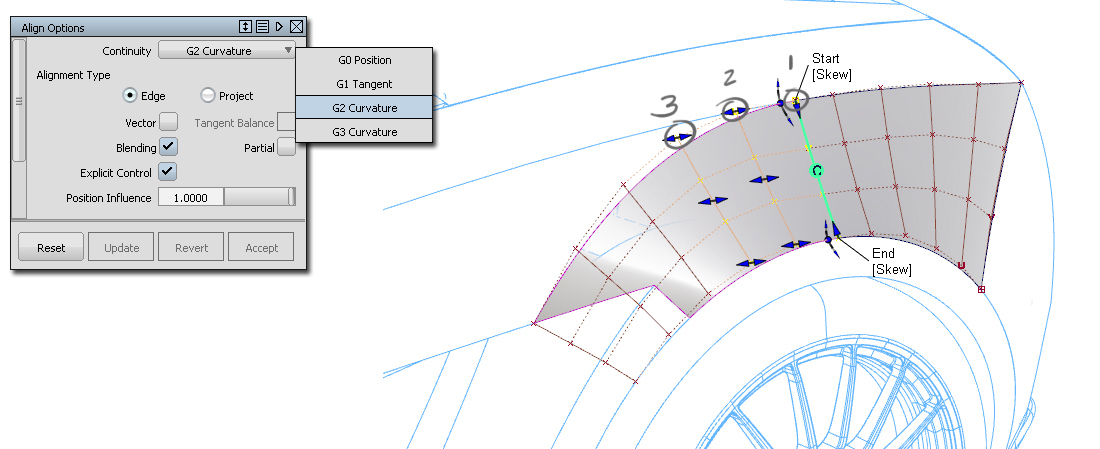
Introduction to Continuity Terminology
Continuity is the term used in Alias to describe how surface patches meet. Here, a fillet blend is used as an example:

How CVs Control Continuity
Continuity is achieved by controlling the CVs at the edge of the aligned curve or surface. A higher continuity level requires more CVs to be aligned.
Here is an example of both a curve and a surface being matched at different continuity levels:

Continuity Between Two Curves or Surfaces
A circular (G1) fillet is specified simply by a radius value. But because G2 and G3 fillets aren't circular, then they need a different way of specifying their size.
The first technique is Radius which keeps a fixed radius (allowing a variable width), and then specifies the size in two ways:

The second technique is Chord which keeps a fixed width (allowing a variable radius), and again there are two ways to specify the size of the fillet:
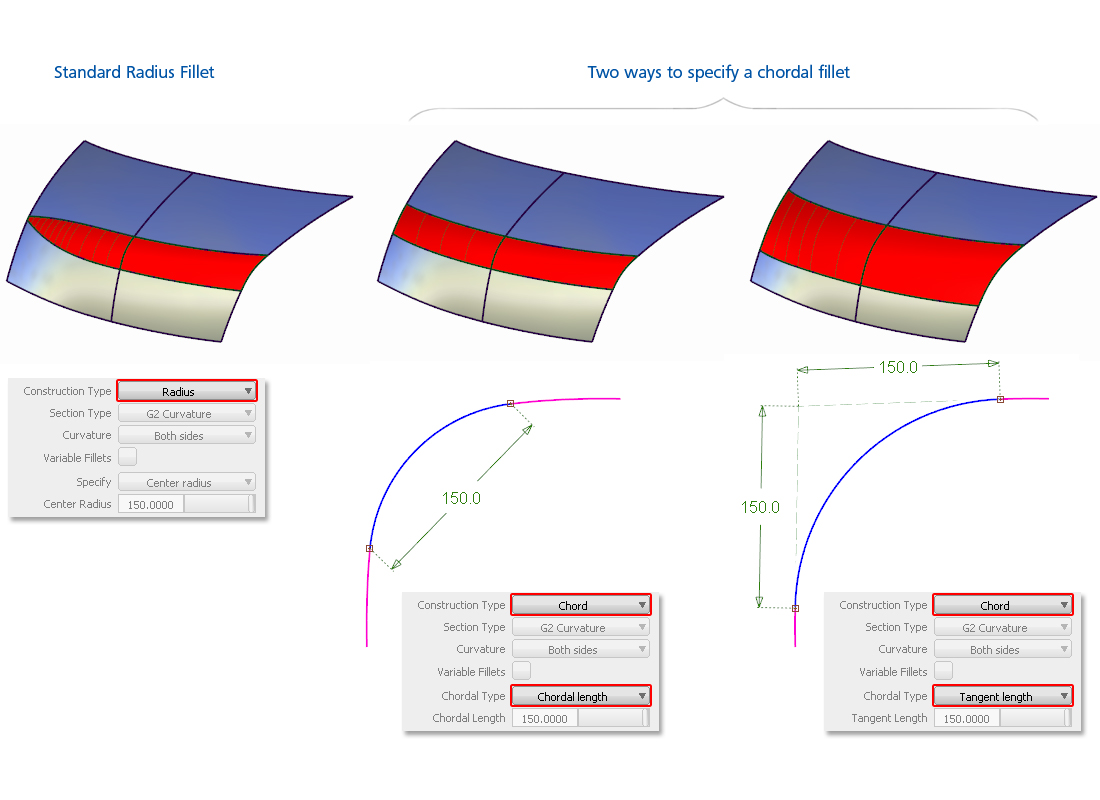
Form Factor
The main determinant of shape is the continuity level chosen (G1, G2 etc.), but there is some flexibility within that provided by the Form Factor. This controls the concentration of CVs towards or away from the centre of the blend, making the curve sharper or flatter.
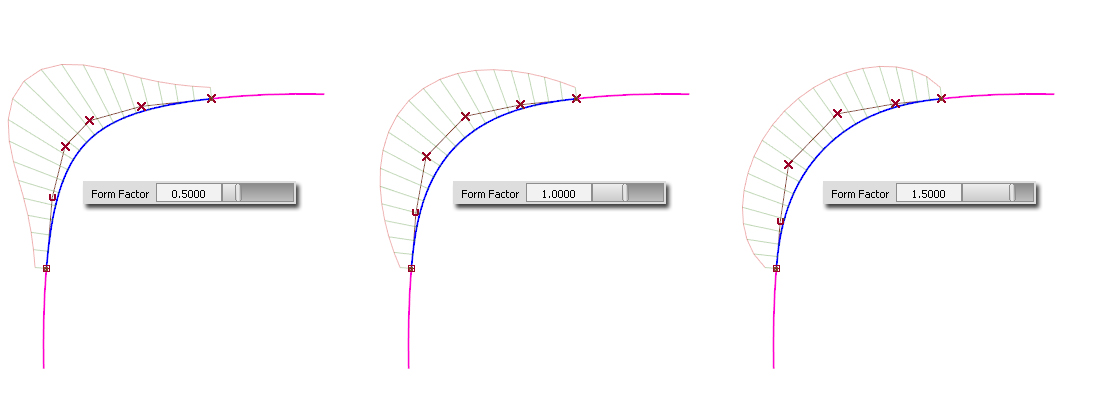
Colinear and Non-Colinear Alignment
The easiest way to get surfaces matching smoothly is when you have:
- Two natural (untrimmed) surface edges to be aligned.
- The surfaces have the same degree and spans in the direction of the joint edge.
These are called colinear surfaces, and when using the Object Edit → Align tool then the Alignment Type : Edge should be used:
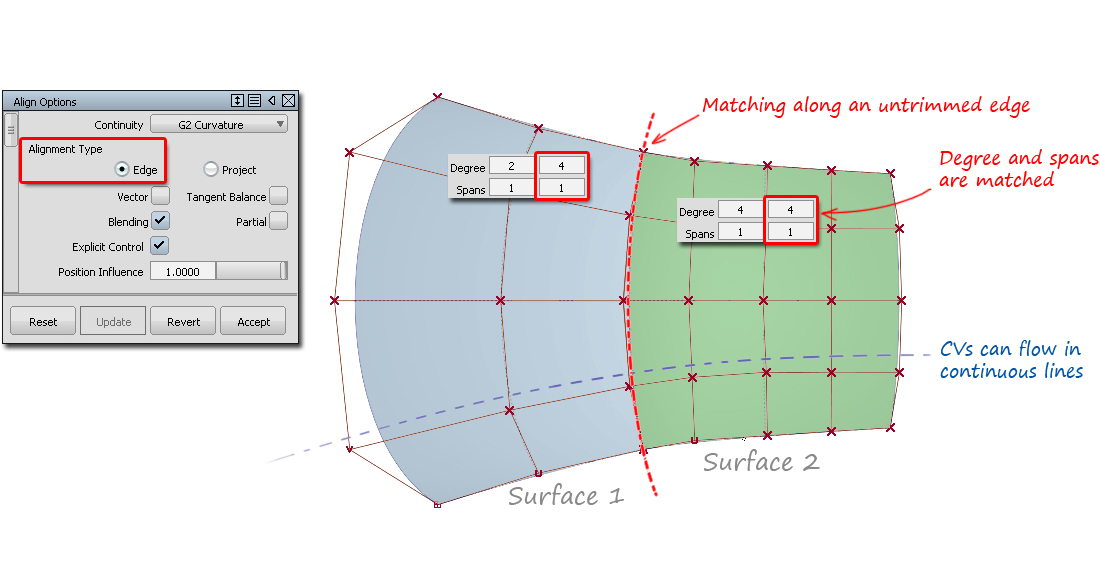
As the design progresses and you need to build more complex transitions, you will have non-colinear situations where you are:
- Aligning to the interior of a surface, or
- Aligning to a trimmed edge.
When using the Object Edit → Align tool, the options should be set to : Alignment Type : Project.
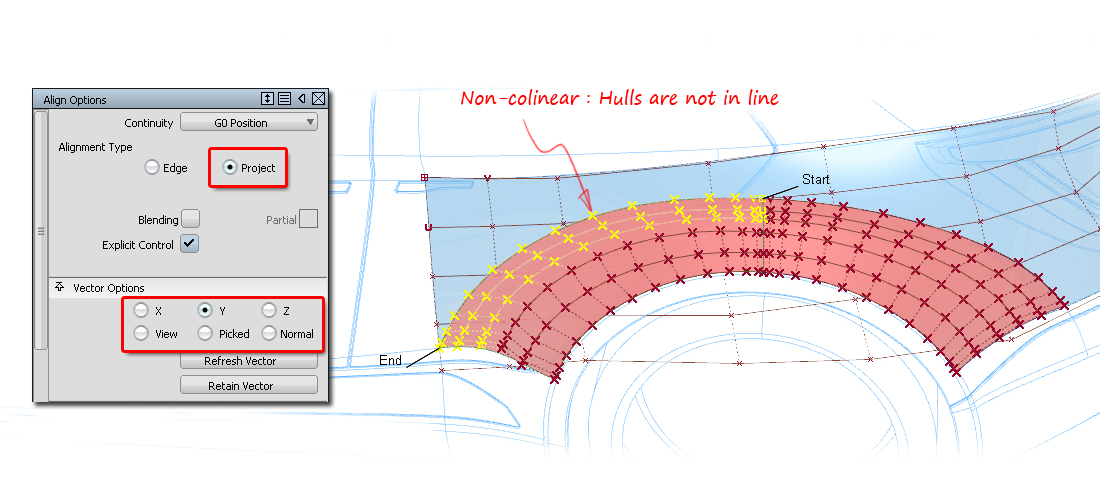
Other tools like Bi-Rail, Square and Freeform Blend will work in non-co-linear situations, but typically produce heavier surfaces with more spans, which may be unevenly spaced.
Continuity Tolerances
Continuity is calculated to a certain tolerance or accuracy. This can be set in the Construction options window and are usually chosen to match the CAD system you expect to be exporting your data to.
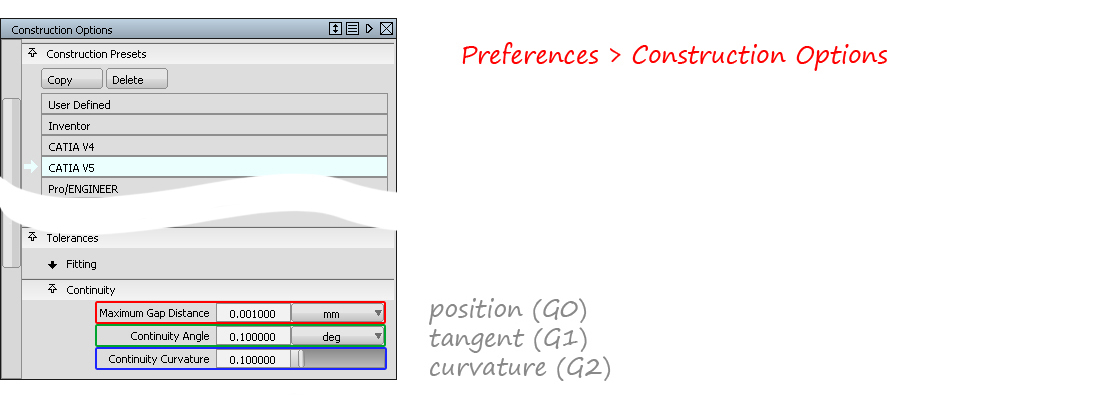
Tools that Achieve Continuity

Example:
